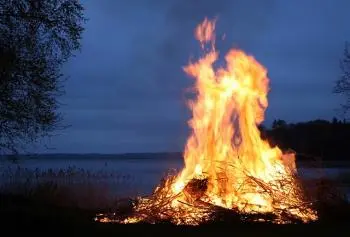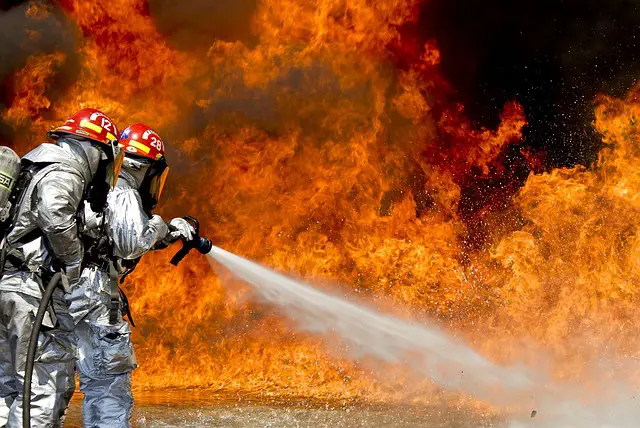
Fire is a natural phenomenon that has fascinated humanity since time immemorial. It has been a fundamental tool for the development and obtaining of energy for civilization, but it has also been a destructive force that has wreaked havoc throughout history.
Fire is the result of a complex interaction of elements and chemical processes that generate various types of energy.
The nature of fire
Before we dive into the details of what type of energy fire produces, it is important to understand the basic nature of this phenomenon.
Fire is an exothermic chemical reaction that occurs when a combustible material combines with oxygen in the presence of heat. This chemical reaction produces heat and light, and is accompanied by the release of energy in the form of electromagnetic radiation in the visible and infrared spectrum.
Types of energy produced by fire
Fire produces several types of energy, which are essential to understand its importance and its use in various applications.
The main types of energy produced by fire are the following:
1. Thermal energy
Thermal energy is the most obvious form of energy produced by fire. When a combustible material burns, a large amount of heat is released in the process.
This thermal energy can be used to heat environments, cook food, generate steam in boilers or produce electricity in thermal power plants.
From the first civilizations to the present day, the use of thermal energy from fire has been essential for human progress.
2. Light energy
 Fire also emits energy in the form of visible light.
Fire also emits energy in the form of visible light.
The flame of fire is a source of light that has been used by humans to illuminate darkness since ancient times. Although today we have much more efficient electric light sources, the light energy of fire is still appreciated in situations such as candles, torches or campfires in nature.
3. Kinetic energy
Kinetic energy refers to the energy associated with the movement of particles. In the case of fire, the chemical reaction between fuel and oxygen generates hot gases that expand rapidly. This expansion creates an upward airflow, which is why flames rise upward.
4. Chemical energy
Fire is, in itself, a manifestation of the release of chemical energy.
When atoms and molecules in fuel combine with oxygen in an oxidation reaction, chemical bonds are broken and energy is released in the form of heat and light.
This chemical energy is essential to maintain the flame and maintain the chain reaction.
The control and use of fire by humanity
The ability to control fire was a crucial milestone in human history. Our ancestors learned to light and maintain fire, allowing them to cook food, scare away predators, and stay warm during cold nights. Over time, this ability led to the development of increasingly sophisticated technologies.
The thermal energy produced by fire was the starting point for the invention of metal smelting, which allowed the creation of more resistant and efficient tools. Additionally, fire was used in pottery, brick making, and mineral purification. These technological advances laid the foundation for the progress of civilization.
In modern times, fire remains an essential energy source in many industries. Thermal power plants burn fossil fuels such as coal or oil to generate electricity, taking advantage of the thermal energy produced by combustion. It is also used in the metallurgical industry for the production of steel and aluminum.
Fire dangers
 Despite its benefits, fire also presents significant dangers. When it gets out of control, it can cause devastating wildfires, destruction of property and loss of life. Additionally, prolonged exposure to smoke and heat from fire can be harmful to health, causing respiratory problems and tissue damage.
Despite its benefits, fire also presents significant dangers. When it gets out of control, it can cause devastating wildfires, destruction of property and loss of life. Additionally, prolonged exposure to smoke and heat from fire can be harmful to health, causing respiratory problems and tissue damage.
Fire is a powerful tool, but its handling must be done with caution and responsibility. Fire prevention education and the proper use of fire extinguishers and other safety equipment are essential to minimizing the risks associated with fire.
Conclusions
Fire is a natural phenomenon that produces various types of energy, including thermal, light, kinetic and chemical energy.
Throughout history, humans have learned to harness these forms of energy for their benefit, which has been crucial to the development of civilization and improving the quality of life.
However, it is important to remember that fire also presents significant dangers, and its management must always be careful and responsible.
Understanding the different types of energy produced by fire allows us to appreciate its importance and use it safely and effectively in our modern lives.